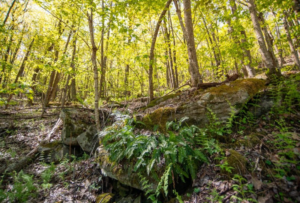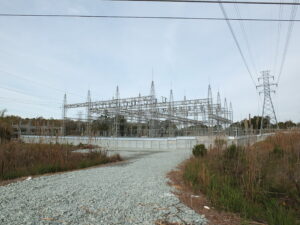Using social media to tackle climate change and deforestation
Lauren Ketwitz
Deforestation in North Carolina has increased over the last few decades. Public interest groups like The Nature Conservancy in North Carolina and Conserving Carolina are fighting against this situation, and to achieve that goal, they need to understand the importance of an online presence, specifically on social media.
Accommodating an expanding urban population in the Research Triangle has led to the loss of more than 100,000 acres of land every year, according to the North Carolina Forest Service. In this metropolitan area, which includes Raleigh, Durham and Chapel Hill, demand for housing and commercial buildings poses a threat to North Carolina’s forests.
Since 1977 The Nature Conservancy in North Carolina has been fighting for protected areas and promoting sustainable forest management in the state. In December 2017, the Conservancy joined Twitter, which has over 38 million users in the United States, according to a Business of Apps article. On Twitter the Conservancy is trying to raise awareness of deforestation while promoting involvement in their programs.
The Nature Conservancy in North Carolina posts links to a variety of media for its more than 800 followers. The posts feature stunning photographs and videos of forests and landscapes, in addition to links to articles about how to get involved in conservation. The account caters to both users who can scroll quickly through the feed and to newcomers who can check out the account for the first time.
The average attention span for social media users is quite short. According to a Career Arc article, social media posts have about two seconds to grab the attention of the audience. This means that the message of the post needs to grab the viewer’s attention quickly and also portray information in a way that is easy to digest.
Conserving Carolina uses similar tactics on their Twitter account. While the video clip on climate above focuses on negative effects of deforestation, both The Nature Conservancy in North Carolina and Conserving Carolina regularly post about successes in their organizations.
In a research article published by the Proceedings of the National Academy of Sciences of the United States of America, researchers found that people react more to negative news, but that the power of positive news is often underestimated. Only posting about negative effects of deforestation might desensitize the audience to these impacts, similar to the way that Americans have been desensitized to recurring news stories regarding school shootings (Salon article). To avoid desensitizing their audience, these two North Carolina conservation organizations devote a hefty portion of Twitter posts to photos of what is being protected, rather than destroyed.

Photo featured on Conserving Carolina’s Twitter. DuPont State Forest added a new section of protected land, which connects it to a 100,000+ acre conservation corridor.
Social media producers are finding ways to make media accessible to more people. Linking visitors directly to an outlet where they can volunteer, donate or sign policy proposals leaves less time for the user to become disinterested in the content.
Both The Nature Conservancy of North Carolina and Conserving Carolina’s Twitter accounts consistently post links that provide opportunities for the public to engage in environmental conservation and learn about specific pro-environment efforts.
This strategy shortens the process to becoming involved. Users don’t have to search for themselves. Instead, they follow a link that is already in their feed. When opportunities for activism are more accessible, the chances of a viewer interacting with the post are higher.
While these online efforts aim to gain support for a greener state, much of North Carolina’s Research Triangle has replaced its natural land cover with dense concentrations of pavement, buildings and other surfaces that absorb and retain heat. A document published by the North Carolina Forest Service shows how these “urban islands” create pockets of intense heat within heavily populated communities thereby increasing energy consumption and perpetuating global warming trends.

Construction clearing in Chapel Hill, North Carolina. A parking deck was torn down to make room for another, larger parking deck with over 1,000 spaces (Photo credits: Lauren Ketwitz)

Second angle of parking deck construction, which shows expanse of cleared plot along a road. A separate construction site is seen in the background. (Photo credits: Lauren Ketwitz)
North Carolina has a population of about 10.5 million people, more than 2 million of whom live in the Research Triangle as of 2015, according to a Lawn Starter article. If population growth matches the trend estimated by the North Carolina Forest Service for the next 10 years, the state is set to have 12.4 million residents.

Massive power plant located outside of Cary, North Carolina. This plot of land was cleared and covered in a layer of cement foundation to support the increase of residential power supply needs in the triangle area. (Photo credits: Lauren Ketwitz)
All these people will need places to live and work. As a result, city boundaries will expand and creep closer to one another. Eventually, the term “urban island” could become obsolete. As natural forest cover shrinks and the influence of social media grows, organizations like The Nature Conservancy in North Carolina and Conserving Carolina will have to adapt their methods of informing and educating the public to ensure their messages don’t fall on deaf ears.
